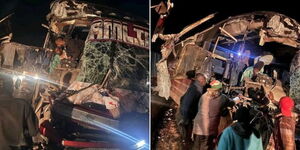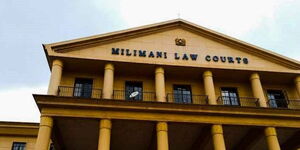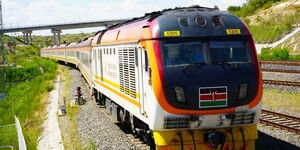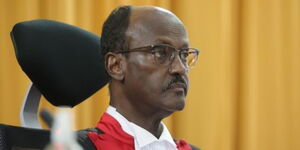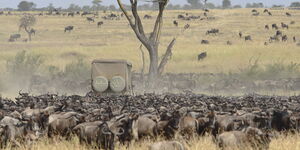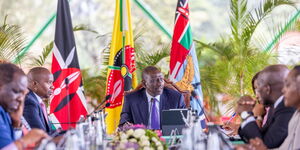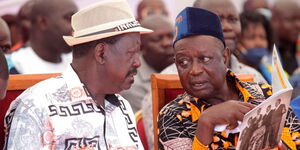This is a detailed expose on the tragic happenings on Day Two of the disarming operation on the Degodia Clan in Wagalla village, in Wajir Town.
Saturday, 11th Feb 1984 - 24 hrs after start of operation.
An inexplicable feature with arid and semi-arid regions is the extremities in weather patterns. In the daytime, it's extremely hot.
The hot sands forge misleading mirages that often make travellers delirious - hopelessly getting lost. In the evening, the temperatures drop - it gets extremely cold - chilly drafts sweep across the open landscape with a vendetta.
This is multiplied tenfold if a person hasn't had enough to eat and drink.
The Degodia men sprawled on their stomachs on the tarmac at Wagalla Airstrip were seasoned locals, but still, it was a long night.
It's not an easy task watching dusk light turn to night, and eventually dawn - in the open at the mercy of the howling desert winds - on an empty stomach.
The Degodia men had by Saturday dawn spent 24 hours without food or drink.
In contrast, the gallant soldiers were having the time of their lives. They had been confined in barracks for a while before this operation, so testosterone was at an all-time high.
They had an unlimited cache of canned food and beverages in cooler boxes.
There was even a truck loaded with beers. Oh, and weed. The soldiers had a local contact supplying weed.
By Saturday mid-morning - the murram had started heating up.
The crouching men needed to be innovative to escape this torture. Two men - Garat Senay Asman and Kanyere Mohammed Yusuf beckoned for the officers.
They stated that they had guns and were willing to surrender them.
The men, in reality, didn't have guns - it was faking. At the time, any excuse to get one free from the scorching sun had to be considered.
An inspector running the operation at the airstrip drove them to the village. Except, there weren't any guns to be surrendered.
The two men were very closely marked - couldn't get a chance to escape. Out of sheer frustration, Garat attempted to throw himself in a well in the middle of the village.
Garat knew he could easily break his neck if he tumbled down the well, but for a drop of water, he was willing to risk it.
The inspector soon realised he'd been played. He ordered his soldiers to serve a lesson-teaching beating to the hapless men. He threw them back to his Landrover and drove back to the airstrip.
Meanwhile, a ray of hope happened - at the District Administration offices.
Then acting District Officer, a Mr. Tiema raised a welfare issue and persisted. That, the Degodia men rounded up at the airstrip needed water and food - by now, the starving men had clocked close to 36 hours.
But, the soldiers could hear none of that.
The DO sought the assistance of the local chief at Wagalla, one Chief Bishar Ishmael Ibrahim. They went to Wajir Town's CBD equivalent and picked a government water bowser assigned to the Ministry of Education.
This truck was registered as GK 134E.
Tiema took command of the water bowser, driven by Police Sgt. Ahmed Wario (now deceased) and filled it with water. He sought extra food from the market and aimed for Wagalla Airstrip.
At the airstrip, soldiers took control of the water bowser and drove it to the furthest corner of the airstrip. A plan had already been hatched - soldiers are trained to make split decisions on the move.
They opened the outlets - water starts running onto the murram.
The Degodia men had stayed over 40 hours - no food, no water. At the sight of water flowing to waste, all 5,000 men arose as one and sprinted to the water bowser - with just one water outlet.
A horrible stampede - over 300 men trampled to death - at the tap.
The 300 victims joined Ishmael in the afterworld. Ishmael had been the first victim, the camel herder boy who'd been shot in the back the previous evening when he'd attempted to flee.
His tiny body was still lying on the murram - by now swollen to twice his size, and desert flies starting to swarm.
To give credit where it's due, not every soldier present at the Wagalla airstrip was rogue, or supported the cruelty being meted on the innocent villagers.
A fair number had a good, humane heart - but orders are orders - and soldiers are not built to defy or question orders of their seniors.
For instance, in post-interviews, one of the Degodia men is on record revealing that he was kept alive by the actions of one of the soldiers.
For reasons unbeknownst to the man, the soldier would repeatedly return and offer him a drink of water from his military water bottle.
Keep it close for a revelation on the masterminds behind the massacre and the half-spirited efforts by the government to conceal the evils, half-heartedly, in a tribunal dubbed Truth And reconciliation Commission (TJRC) which was anything but - headed by Amb. Bethuel Kiplagat.
To Follow: The Tragic Epilogue - Day Three
Source: @Historyke101

